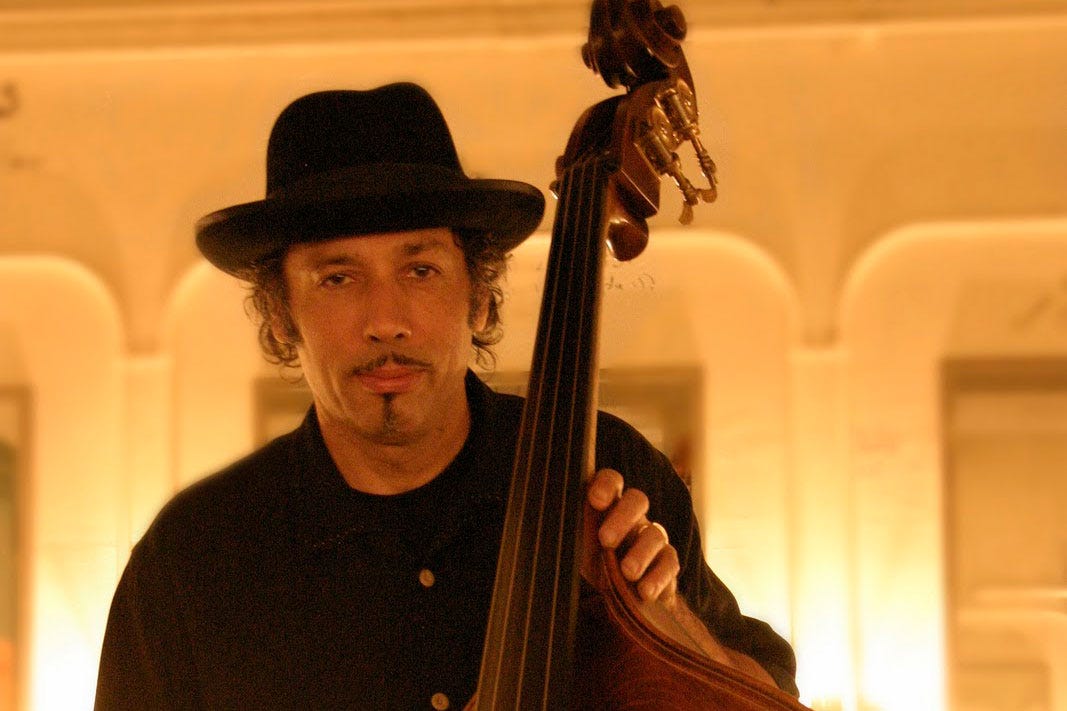Tony Garnier on how to play with Bob Dylan
I don’t know anyone who knows as many songs as Bob does—including from the earliest times of man.
Original source: Bassplayer.com
About a year into my tenure, G.E. Smith and Bob were doing three or four acoustic duo songs in the middle of the show; I asked if I could add upright, and it grew from there. I’d say it’s about 50/50 now, or maybe a bit more electric. In addition to my single-cutaway Warwick Star Bass—which is one of my favorite electric basses I’ve ever played with Bob—I’ve been playing some Fender VI “tictac” bass. I use a medium pick, usually muting the strings with my palm, and it really cuts in a big room. Generally, I make a decision and if Bob wants something else, he’ll say so. With the songs I’ve recorded since I’ve been in the band, I basically stay the same way on tour, although I cut “Thunder on the Mountain” [2006, Modern Times] on upright, and live, it seems to work better on electric.
I’ll come up with my own bass lines, or versions of bass lines from Bob’s earlier songs, and if he wants it different he’ll let me know. Simplicity works best. Complicated bass lines can be distracting. You don’t want to disrupt the song; you want to help it along.
What I’m all about is trying to add some movement in between the vocal or the verses, but not sound like I’m just filling. I’m looking to provide subtle forward motion, as opposed to playing a fixed, steady groove.
You have to learn the lyrics to the songs. That will tell you what and how to play, and it makes your job easier because you have a connection; you’re not just playing notes and chords.
I’ve always told new guys in the band, “You’re not playing guitar—you’re playing a song.” I know what the songs are about, and that gives me an emotional attachment when I’m coming up with the bass lines. And of course there’s Bob’s interpretation to draw from.
The songs are different every night because he never sings them the same way, so we’re not playing them the same way. If he’s phrasing a little differently on a song like “A Simple Twist of Fate,” the bass line I played the night before might not work. He may bunch up some words or draw them out, and it goes beyond that; sometimes he’ll change the chords. Or he’ll sing a different melody for a few nights, or change the lyrics—like on “Tangled Up in Blue,” the lyrics in the show are different from the recorded version.
The concepts I’ve learned from him are like what you might learn from Duke Ellington or Miles Davis—ideas that you can use with other artists throughout your career. For example, in Bob’s book Chronicles: Volume One [2004, Simon & Schuster], he speaks about music in terms of numbers and how three and five are interesting choices. Maybe he’ll write a song with three verses and a bridge, or create a melodic line in groupings of five, and the same can apply for bass lines. If I’m stuck, I may apply that, or something like what Rick Danko did on “Chest Fever” by The Band
Dynamics are also key, because he may sing a verse at a lower volume. Ultimately, it’s a conversation between everyone onstage. All I have to do is listen and react. It’s actually a lot easier than having to play the same bass lines every night, and it’s much more creative and fun.
I don’t know anyone who knows as many songs as Bob does—including from the earliest times of man. He wanted to do some of these older standards; I don’t think it was supposed to be a Sinatra tribute, but Frank’s versions of the songs helped guide us. The ballads and torch songs seemed to be a good choice, as opposed to doing an album of Sinatra swing tunes. From there, we needed to make the songs work with our five-piece band [lead guitarist Charlie Sexton, rhythm guitarist Stu Kimball, pedal lap steel/multi-instrumentalist Donnie Herron, and drummer George Receli], in lieu of big orchestral arrangements. If you listen to Frank Sinatra with the Red Norvo Quintet: Live in Australia, 1959 [Blue Note] or Sinatra & Sextet: Live in Paris: 1962 [Reprise], you’ll hear that it can be done. We just had to get together and hone our parts, and that’s how we recorded: live in the studio with no overdubs.




Garnier is right about not playing the exact same lines night after night ..at least I think. If you have skill and sensitivity to the song it's fairly easy.
Imagine Tony playing in the Eagles, lololol .. crabby old Don Henley would go apoplectic
“You’re not playing guitar—you’re playing a song.” Love that.